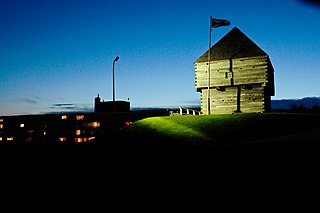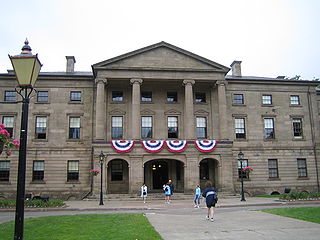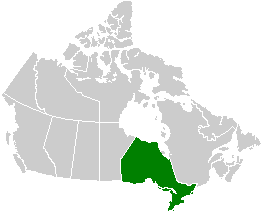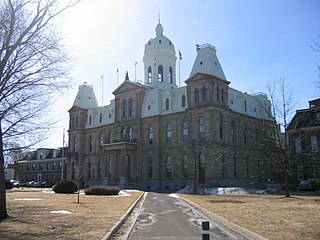| Heritage Places Protection Act | |
|---|---|
 Province House, where Prince Edward Island's legislature meets, became a Designated Heritage Place under the Heritage Places Protection Act in 2004 [1] | |
| Citation | R.S.P.E.I. 1988, c. H-3.1 |
| Territorial extent | Prince Edward Island |
| Enacted by | Legislative Assembly of Prince Edward Island |
| Date enacted | 1988 |
The Heritage Places Protection Act is a provincial statute which allows for the recognition and protection of cultural heritage and natural heritage properties in the province of Prince Edward Island, Canada. [2]

The provinces and territories of Canada are the sub-national governments within the geographical areas of Canada under the authority of the Canadian Constitution. In the 1867 Canadian Confederation, three provinces of British North America—New Brunswick, Nova Scotia, and the Province of Canada —were united to form a federated colony, becoming a sovereign nation in the next century. Over its history, Canada's international borders have changed several times, and the country has grown from the original four provinces to the current ten provinces and three territories. Together, the provinces and territories make up the world's second-largest country by area.

A statute is a formal written enactment of a legislative authority that governs a city, state, or country. Typically, statutes command or prohibit something, or declare policy. Statutes are rules made by legislative bodies; they are distinguished from case law or precedent, which is decided by courts, and regulations issued by government agencies.

Cultural heritage is the legacy of physical artifacts and intangible attributes of a group or society that is inherited from past generations.
Contents
The Act requires the province's Minister of Tourism and Culture to establish a register of "heritage places", sites containing or comprising immovable "historic resources" (defined as any work of nature or of man that is primarily of value for its palaeontological, archaeological, prehistoric, historic, cultural, natural, scientific or aesthetic interest). A place may consist of a single property and/or building, a heritage trail or corridor, or a heritage district comprising more than one heritage place. There are two levels of historic recognition for heritage places included on the register:
- Registered Heritage Place: Any site or structure that has been researched and has been deemed to be a provincial heritage resource. This level of recognition identifies the place as being of historic value, yet does not place any restrictions on the property owner.
- Designated Heritage Place: Any site or structure designated by the Minister. Designation is the highest level of recognition under the Act. No owner can demolish or alter a building or structure within a Designated Heritage Place, nor can they build or undertake works that may adversely affect any designated land, without a permit from the Minister. [3] [4]
Prince Edward Island has a heritage plaque program to provide public recognition for Designated Heritage Places which are designated under the terms of the Act. The navy blue and gold enamel plaques are provided at no cost to the owners of designated buildings. [5]
The Minister may delegate any of his or her powers under the Act to a municipality, with the consent of the municipal council in question, as long as the municipality has a heritage plan in place setting out its objectives, policies and programs for the conservation of its heritage. [4] The Province's two most populous municipalities, Charlottetown and Summerside, accordingly have civic recognition programs for historic sites within their respective jurisdictions. [3]

A municipality is usually a single administrative division having corporate status and powers of self-government or jurisdiction as granted by national and regional laws to which it is subordinate. It is to be distinguished (usually) from the county, which may encompass rural territory or numerous small communities such as towns, villages and hamlets.

Charlottetown is the capital and largest city of the Canadian province of Prince Edward Island, and the county seat of Queens County. Named after Charlotte of Mecklenburg-Strelitz, queen consort of King George III of the United Kingdom, Charlottetown was originally an unincorporated town that incorporated as a city in 1855.
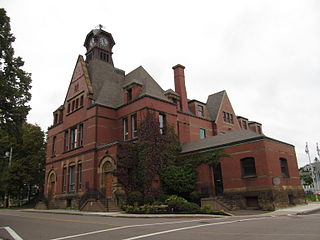
Summerside is a Canadian city in Prince County, Prince Edward Island. It is the second largest city in the province and the primary service centre for the western part of the island.
